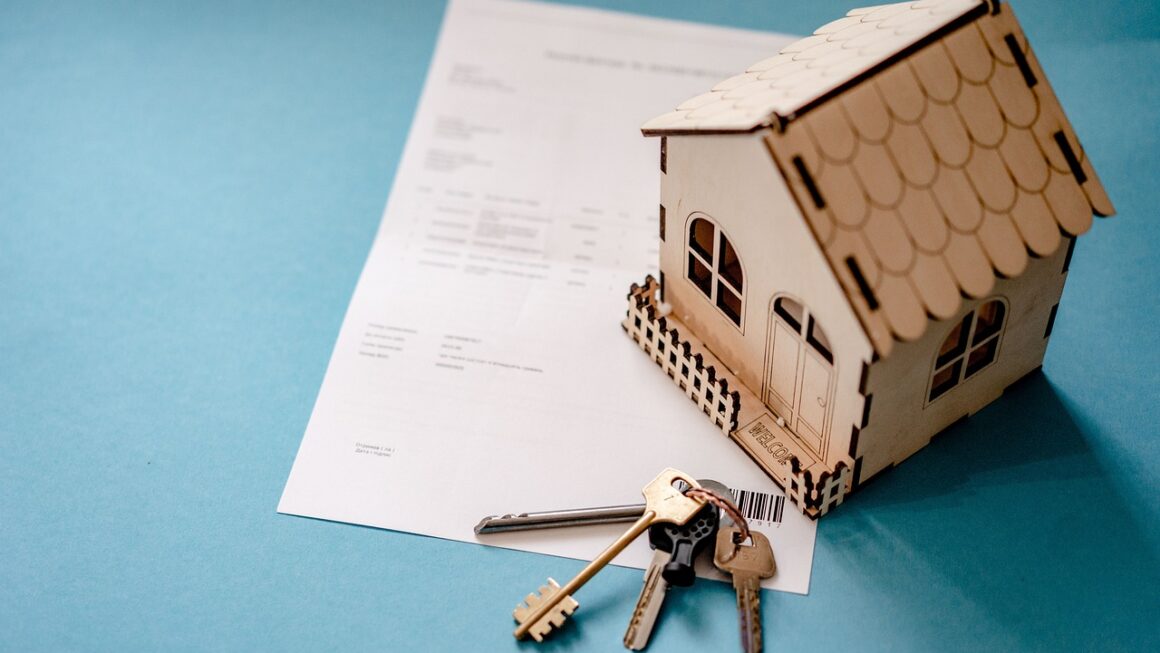Navigating the world of property ownership can feel like a maze of decisions, and one of the most crucial is securing the right property insurance. Whether you’re a homeowner, landlord, or business owner, understanding the ins and outs of property insurance is paramount to protecting your investment and achieving peace of mind. This guide will break down the key aspects of property insurance, helping you make informed choices about your coverage.
Understanding Property Insurance: What It Covers
Property insurance protects your physical assets from a wide range of perils. The specific events covered depend on your policy type, but understanding the commonalities is crucial.
What is Covered?
- Dwelling Coverage: This protects the physical structure of your property, including the walls, roof, and attached structures like a garage or deck.
Example: If a tree falls on your roof during a storm, dwelling coverage would help pay for the repairs.
- Personal Property Coverage: This covers your belongings inside the property, such as furniture, electronics, clothing, and appliances.
Example: If your belongings are damaged in a fire, personal property coverage would help replace them.
- Other Structures Coverage: This protects structures on your property that are not attached to your main dwelling, such as a detached garage, shed, or fence.
Example: If a vandal damages your fence, other structures coverage would cover the repair costs.
- Loss of Use Coverage: This helps cover additional living expenses if your property becomes uninhabitable due to a covered peril.
Example: If a fire forces you to stay in a hotel while your home is being repaired, loss of use coverage would help pay for your hotel stay and meals.
- Liability Coverage: This protects you financially if someone is injured on your property and you are found liable.
Example: If a guest slips and falls on your icy sidewalk, liability coverage would help cover their medical bills and legal fees.
What is NOT Covered?
While property insurance offers broad protection, there are common exclusions to be aware of.
- Floods: Standard property insurance policies typically do not cover flood damage. You’ll need a separate flood insurance policy, often available through the National Flood Insurance Program (NFIP).
Note: Even if you don’t live in a designated flood zone, flood insurance is worth considering, as floods can occur anywhere.
- Earthquakes: Similar to floods, earthquake damage is usually excluded from standard policies. You’ll need a separate earthquake insurance policy.
- Wear and Tear: Gradual wear and tear, deterioration, and neglect are not covered. This includes things like a leaky roof that hasn’t been maintained or a cracked foundation due to age.
- Pest Infestations: Damage caused by pests like termites, rodents, or insects is typically not covered.
- Acts of War: Property damage resulting from acts of war is generally excluded.
Types of Property Insurance Policies
Different types of property insurance policies offer varying levels of coverage and protection. Understanding the distinctions is vital for choosing the right fit.
Homeowners Insurance
Designed for owner-occupied residences, homeowners insurance offers protection for the dwelling, personal property, liability, and loss of use. There are different “forms” of homeowners insurance (HO-1, HO-2, HO-3, HO-5) which determine the types of perils covered.
- HO-3 (Special Form): The most common type of homeowners insurance. It covers all perils unless specifically excluded.
- HO-5 (Comprehensive Form): Offers broader coverage than HO-3, covering more perils and often providing replacement cost coverage for personal property.
- HO-1 and HO-2: Cover only specifically named perils, making them less comprehensive than HO-3 and HO-5.
Renters Insurance
Renters insurance, also known as HO-4, protects renters’ personal property, liability, and loss of use. It does not cover the physical structure of the building, as that is the landlord’s responsibility.
- Key benefit: Provides peace of mind knowing your belongings are protected, even if you don’t own the property.
- Important tip: Accurately estimate the value of your personal property to ensure you have adequate coverage. Create an inventory of your belongings and update it regularly.
Landlord Insurance
Landlord insurance, also known as DP-3 or Dwelling Fire Policy, protects landlords’ investment properties. It typically covers the dwelling, other structures, liability, and loss of rental income.
- Key features: Coverage for damage to the property caused by covered perils, liability protection for tenant injuries, and loss of rental income if the property becomes uninhabitable.
- Important consideration: Landlord insurance typically does not cover the tenant’s personal property. Tenants should obtain their own renters insurance.
Commercial Property Insurance
Commercial property insurance protects businesses’ physical assets, including buildings, equipment, inventory, and furniture.
- Examples of coverage:
Fire damage to a warehouse.
Theft of equipment from an office.
Damage to inventory caused by a burst pipe.
- Business Interruption Coverage: An important component of commercial property insurance, business interruption coverage helps cover lost income and expenses if your business is forced to temporarily close due to a covered peril.
Factors Affecting Property Insurance Costs
Several factors influence the cost of your property insurance premium. Understanding these factors can help you make informed decisions about your coverage and potentially lower your costs.
Property Characteristics
- Location: Properties in areas prone to natural disasters, such as hurricanes, tornadoes, or wildfires, will generally have higher premiums.
Example: Homes located near the coast are at higher risk of hurricane damage and thus have higher insurance premiums.
- Construction Type: The materials used to build your property can affect your insurance costs. Buildings made of fire-resistant materials may qualify for lower premiums.
Example: A brick building will typically have lower insurance premiums than a wood-frame building.
- Age and Condition: Older properties may have higher premiums due to increased risk of issues like leaks, faulty wiring, or aging plumbing.
Tip: Regular maintenance and upgrades can help reduce your insurance costs.
- Square Footage: Larger properties generally require more coverage and therefore have higher premiums.
Coverage Options
- Deductible: The amount you pay out-of-pocket before your insurance coverage kicks in. Choosing a higher deductible will lower your premium, but you’ll have to pay more if you file a claim.
Consideration: Choose a deductible you can comfortably afford to pay.
- Coverage Limits: The maximum amount your insurance policy will pay out for a covered loss. Higher coverage limits will result in higher premiums.
- Policy Type: As discussed earlier, different policy types offer varying levels of coverage, which directly impacts the cost. More comprehensive policies will generally cost more.
Other Factors
- Claims History: If you have a history of filing insurance claims, you may pay higher premiums.
- Credit Score: In some states, insurance companies use credit scores to assess risk and determine premiums. A lower credit score may result in higher premiums.
- Bundling: Bundling your property insurance with other policies, such as auto insurance, can often result in a discount.
- Security Systems: Having a security system, smoke detectors, or a sprinkler system can potentially lower your insurance costs.
How to Choose the Right Property Insurance Policy
Choosing the right property insurance policy requires careful consideration of your needs and circumstances.
Assess Your Needs
- Determine the value of your property and belongings: Accurately estimate the cost to rebuild your property and replace your personal belongings.
- Consider your risk tolerance: How much risk are you willing to bear? A higher deductible will lower your premium, but you’ll have to pay more out-of-pocket if you file a claim.
- Evaluate your location: Are you in an area prone to natural disasters? If so, you may need additional coverage, such as flood or earthquake insurance.
- Think about liability: How much liability coverage do you need to protect yourself if someone is injured on your property?
Compare Quotes
- Get quotes from multiple insurance companies: Don’t settle for the first quote you receive. Shop around and compare rates from different insurers.
- Read the fine print: Carefully review the policy terms and conditions, including the exclusions and limitations.
- Ask questions: Don’t hesitate to ask the insurance agent or company any questions you have about the policy.
- Consider an independent insurance agent: Independent agents can help you compare quotes from multiple companies and find the best policy for your needs.
Understand Replacement Cost vs. Actual Cash Value
- Replacement Cost: Pays the full cost to replace damaged property with new items, without deducting for depreciation.
- Actual Cash Value (ACV): Pays the replacement cost minus depreciation. This means you’ll receive less money for older items.
Example: If your 10-year-old sofa is destroyed in a fire, replacement cost coverage would pay for a new sofa of similar quality. ACV coverage would pay for the current value of the 10-year-old sofa, which would be significantly less.
- Recommendation: Opt for replacement cost coverage whenever possible to ensure you can fully replace your damaged property.
Filing a Property Insurance Claim
Knowing how to file a property insurance claim properly is essential for receiving a fair settlement.
Document the Damage
- Take photos and videos: Document the damage as soon as possible after the event. This will provide visual evidence for your claim.
- Make a list of damaged or lost items: Include a description of each item, its age, and its estimated value.
- Keep receipts and records: Save receipts for any expenses you incur as a result of the damage, such as temporary housing or emergency repairs.
Notify Your Insurance Company Promptly
- Contact your insurance company as soon as possible: The sooner you file a claim, the sooner the claims process can begin.
- Provide accurate information: Be honest and accurate when providing information to your insurance company.
Cooperate with the Adjuster
- The insurance company will assign an adjuster to your claim: The adjuster will inspect the damage, review your policy, and determine the amount of your settlement.
- Cooperate with the adjuster: Provide them with all the information and documentation they need.
- Don’t be afraid to negotiate: If you disagree with the adjuster’s assessment, you have the right to negotiate for a fair settlement.
Conclusion
Property insurance is an essential safeguard for your most valuable assets. By understanding the various types of policies, the factors influencing costs, and the process of filing a claim, you can make informed decisions to protect your property and your financial well-being. Remember to regularly review your policy to ensure it meets your evolving needs and circumstances. Don’t wait until disaster strikes – invest in adequate property insurance coverage today for peace of mind tomorrow.




